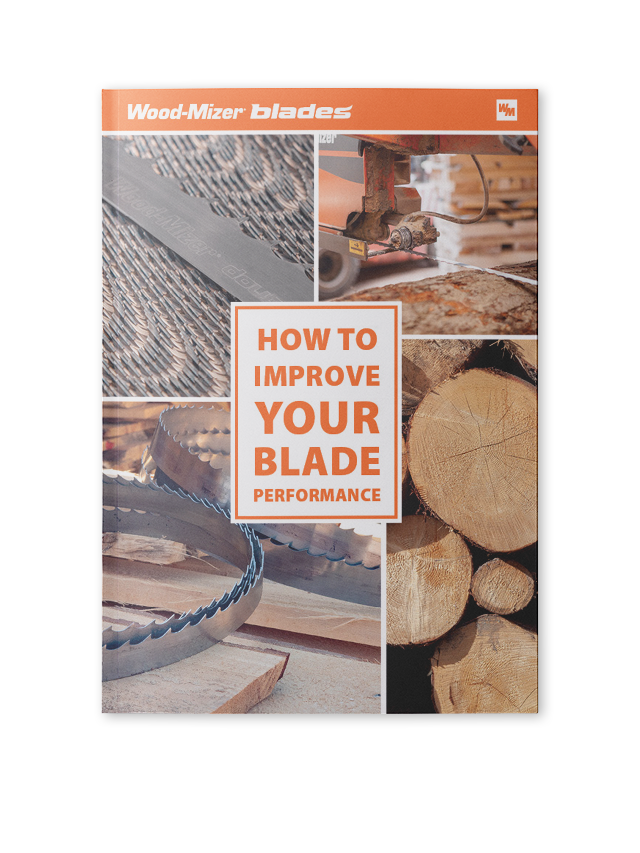How To Choose a Sawmill Blade Profile
By Wood-Mizer, Europe
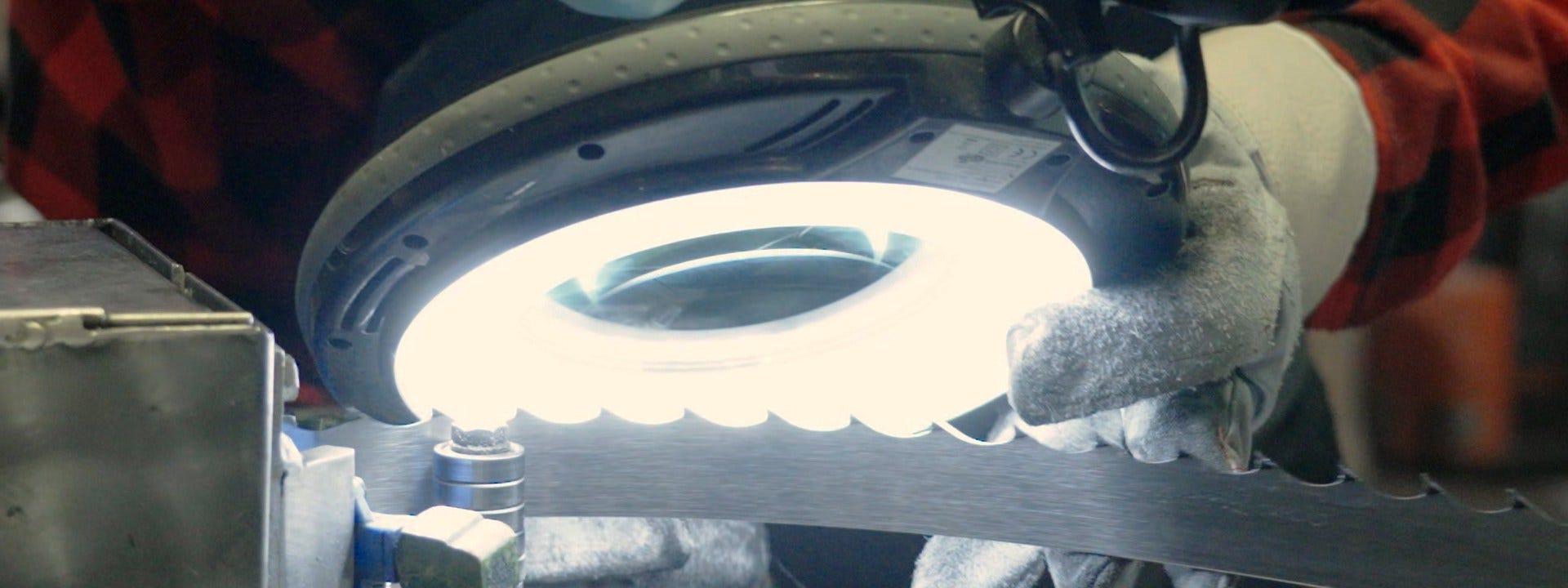
Using the best sawmill blade is key to increasing production, improving cut quality, and reducing your sawmilling or resawing operation costs. From green softwoods to abrasive hardwoods, Wood-Mizer manufactures an industry-leading range of sawmill blades with more than 100 combinations based on profile, width, thickness, tooth spacing, and material for any type of sawing or resawing application. With a wide variety of options available, selecting the blades that best fit your operation can be complex. Here is a helpful guide to understanding different parts of a band sawmill blade and how to choose the best blade profile and material for your sawing application.
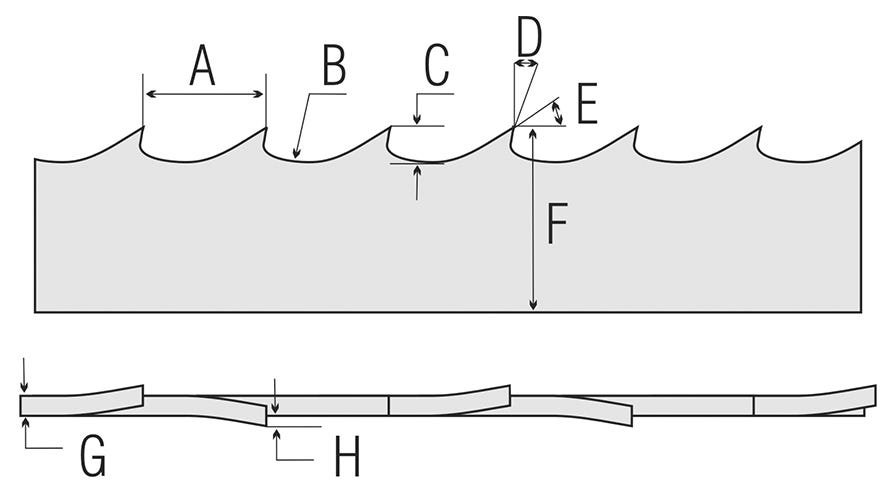
A = Tooth spacing
B = Gullet
C = Tooth height
D = Hook angle
E = Back angle
F = Blade width
G = Blade Thickness
H = Tooth set
A. Tooth Spacing is the distance between each tooth from one tip to another. Shorter tooth spacing (1/2", 5/8", 3/4", and 7/8" - 12.7mm, 15.87mm, 19.05mm, and 22.22mm) is generally used for low horsepower sawing (18kW / 24HP or less), secondary processing, and resawing, while wider tooth spacing (1” and 1-1/4” – 25.4mm and 31.75mm) is ideal for high production, high power (18.5kW / 25HP or more) operations.
B. Gullet is the area between teeth that captures and removes sawdust while providing strength in the tooth. The tooth height must be tall enough to allow the gullet to carry out sawdust from the cut.
C. Tooth Height is the distance from the lowest point of the gullet to the highest tip of the tooth. Taller teeth (7° and Turbo 7° hook angle) provide more performance in higher horsepower (18.4kW / 25HP or more) with increased sawdust removal. Shorter teeth (9° and 10° hook angle) are better for lower horsepower (18kW / 24HP or less), small log diameter sawing, resawing, and secondary processing.
D. Hook Angle is the number of degrees that the tooth face leans forward of 90 degrees. The hook angle should be chosen based on the type of wood you are sawing.
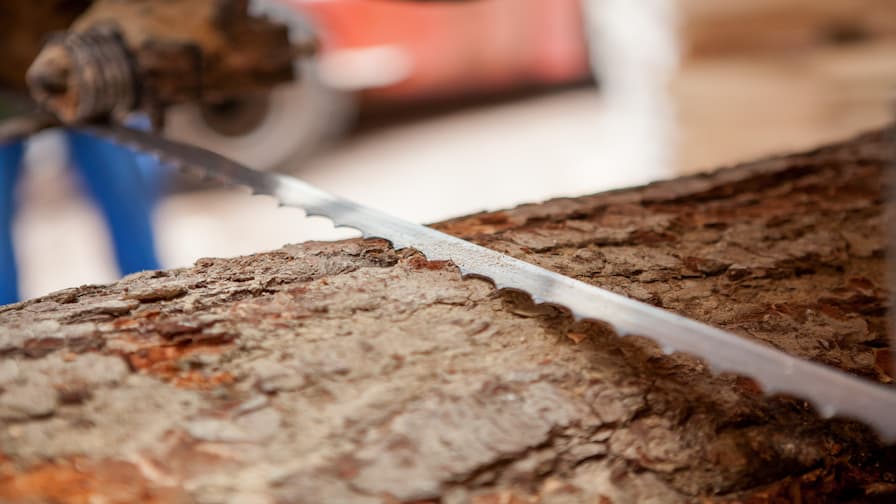
7° Sawmill Blades - Solid, all-around profile with a good gullet capacity for higher horsepower (18.4kW / 25HP or more) sawing in hardwoods.
Turbo 7° Sawmill Blades - Only available from Wood-Mizer, this high performing profile with an aggressive 39° back angle is engineered specifically for extreme and exotic hardwoods when sawing with higher horsepower (18.4kW / 25HP or more) equipment.
Turbo 747 Sawmill Blades – Only available from Wood-Mizer, this profile is compatible with all horsepower levels and features a deeper capacity gullet for increased sawdust removal, extreme 47° back angle for faster sawing speeds, and sharp penetrating points for increased sawing accuracy.
9° Sawmill Blades - Ideal blade for lower horsepower (18kW / 24HP or less) sawing frozen wood, hardwood, and small diameter logs.
10° Sawmill Blades - Very popular all-purpose blade for all horsepower levels sawing mixed hardwoods such as red oak, cherry, walnut, soft maple, and poplar.
Vortex™ Sawmill Blades - Only available from Wood-Mizer, this unique dust-removal profile has more gullet capacity to remove sawdust from the board.
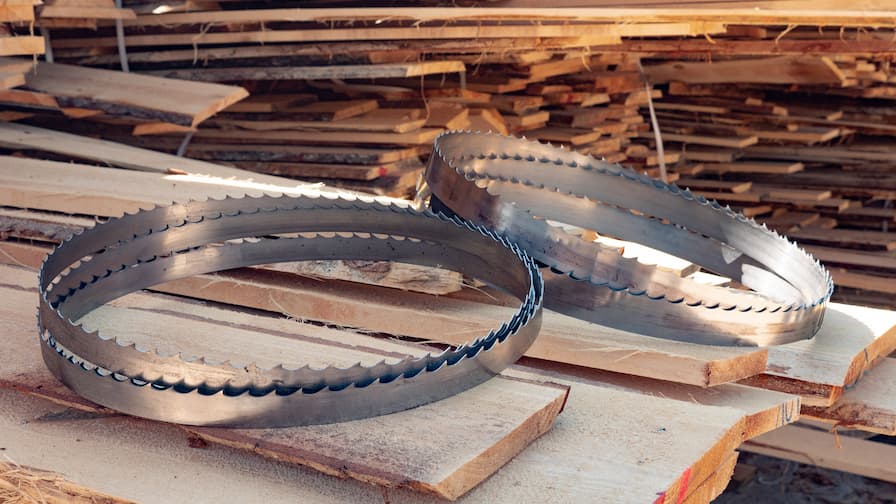
F. Blade Width is the distance between the tip and base of the blade. Wider blades (1-1/2" to 2" – 38mm to 50mm) are designed for higher horsepower (18.4kW / 25HP or more) sawmills, provide a faster feed rate, and can be resharpened more. Narrow blades (1-1/4" to 1-1/2" – 32mm to 38mm) are for lower horsepower sawmills (18kW / 24HP or less) and more difficult sawing.
G. Blade Thickness is the thickness of the blade. Thicker blades (.045", .050", .055") provide faster feed rates and better cutting performance in difficult sawing conditions such as knotty, frozen, dry, or extremely hard material, but requires higher horsepower (18.4kW / 25HP or more). Thinner blades (.035", .038", .042") provide longer flex life with lower horsepower sawmills (18kW / 24HP or less) where production or speed is not a primary factor.
H. Tooth Set is the distance the tooth is bent beyond the body or raker tooth of the blade. Tooth set clears a path in the wood for the blade's body, which is measured by kerf or the total amount of wood removed by the blade with each pass. Wood-Mizer thin kerf blades remove less than 2.5mm, producing about 20% more boards per log than circle mills or chainsaws.
Get a Free Ebook
Find out how to improve your blade performance and extend blades lifetime. Subscribe to our newsletter and get an ebook covering the ten most important topics on bandsaw blades and links to useful videos.
